Edmond has a giant cross, could it now get a giant Wiley Post statue?
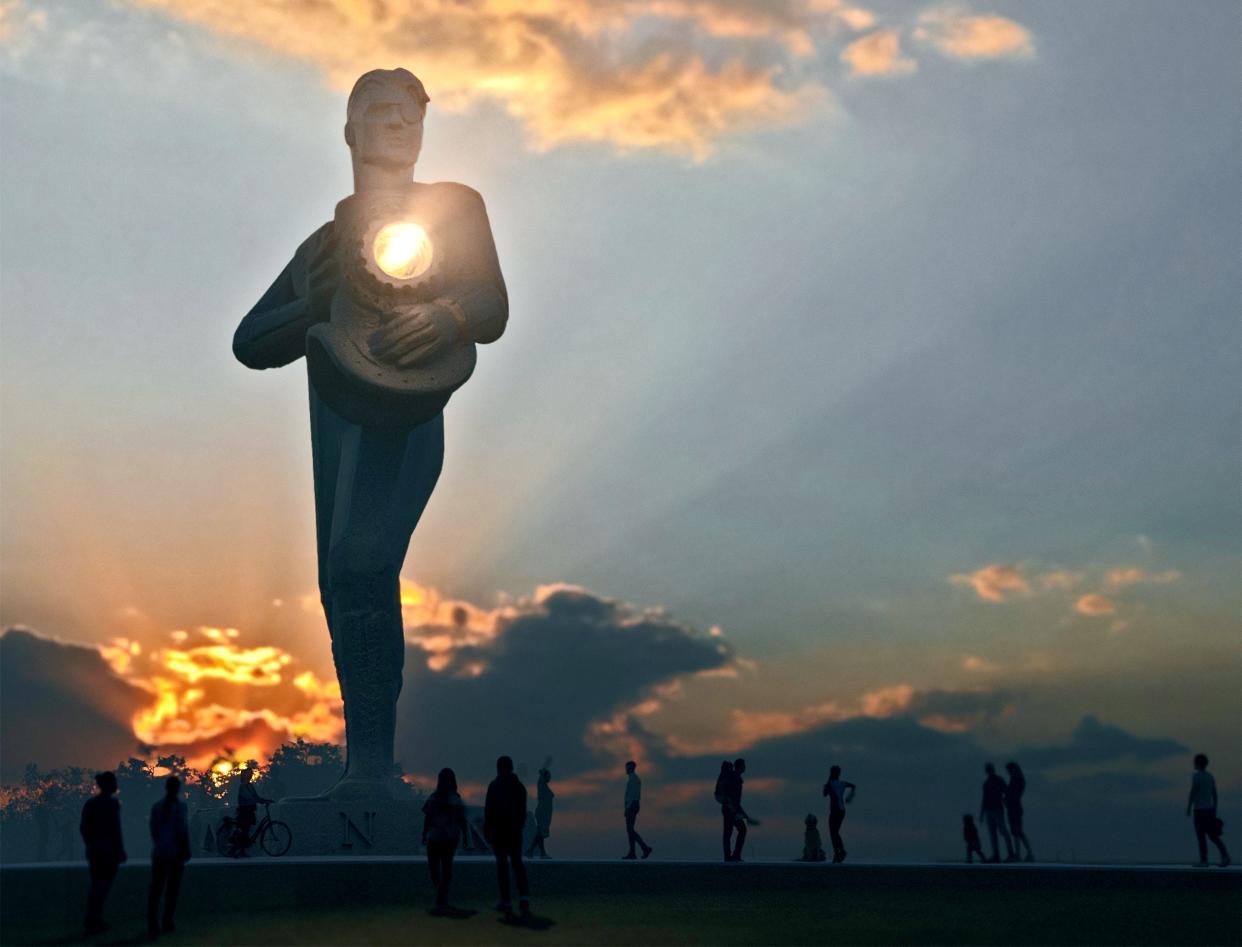
- Oops!Something went wrong.Please try again later.
- Oops!Something went wrong.Please try again later.
EDMOND — Inherent genius, compelling urge and steel-willed determination helped Oklahoman Wiley Post achieve global fame and establish an enduring legacy as a aviation pioneer.
An Oklahoma City artist is drawing on similar strengths as he seeks to build a massive statue of Post in east Edmond .
Nathan Pratt, a Cheyenne-Arapaho artist and inventor who works with ceramics, glass, woods, concrete, metal and more hopes to establish a 50-foot-tall sculpture of the famous aviator dressed in a pressure suit he developed during the early 1930s to fly his beloved "Winnie Mae" aircraft higher and faster than anyone, yet.
The "Beacon of Vision" sculpture seeks to get Oklahomans to consider their futures as they peer into the past of an Oklahoman whose life was marked by struggle and perseverance, Pratt said.
"Vision extends far beyond the frontiers of visible sight," a video about the proposed monument states.
Post dreamed of flight at a young age
"Wiley Post; From Oklahoma to Eternity," written by Bob Burke and and published in 2006, the Encyclopedia of Oklahoma History and Culture and "Wiley Post, his Winnie Mae, and the World’s First Pressure Suit," published in 1971 by the Smithsonian Annals of Flight provide plenty of details about Post's life and his aviation experiences.
Post, who only completed an elementary-level education, fell in love with aviation as a teenager. He enrolled in a flight-related training program during World War I, but the conflict ended before Post graduated.
Post began working as a roughneck after being convicted of felony theft and spending about a year in prison. But he continued to dream about aviation and jumped at the chance to work as a substitute flying circus' parachute jumper in 1924.
Eventually, he marketed himself as a freelance jumper where he could make as much as $200 per performance and completed 99 successful jumps in two years.
More: In 1935, Will Rogers, Wiley Post died. The story behind Oklahoma's favorite sons
By 1926, Post had soloed as a pilot for a first time and wanted to purchase his own plane, leading him back to roughnecking to earn enough to reach his goal. However, his left eye was injured by an iron bolt chip dislodged by a sledgehammer, leading to an infection requiring the eye to be removed.
But Post continued to pursue his dream, buying his first aircraft, a Canuck — the Canadian version of a Curtiss JN-4 "Jenny" military trainer — in 1927 for $240, part of what he received through Oklahoma's workers compensation system for his injury.
He barnstormed for the next couple of years, obtained his pilot's license and then met two Oklahomans who owned an oil and gas company who were buying a new aircraft so they could easily visit their holdings.
Florence (F.C.) Hall and and Powell Briscoe sent Post to Los Angeles to pick up a Lockheed Vega, named the Winnie Mae for Hall's daughter. Eventually, the owners bought a newer Vega christened with the same name in 1930.
The second Vega, equipped with a 420-horsepower Pratt and Whitney Wasp engine, was destined for global glory with Post at its controls.
Wiley Post raced his way into history
Hall and Briscoe's original Vega already had done well in national distance races across parts of the country by the time Post picked up the second plane in 1930.
Post modified the newer plane by tweaking its wing configuration, boosting its fuel capacity and improving its engine performance and received Hall's approval to enter the aircraft in a race between Los Angeles and Chicago.
Post won using navigational maps created by Australian navigator Harold Gatty, beating his closest competitor by 11 seconds even after losing a compass during the race.
He next turned his attention to completing an around-the-world flight with Hall's backing, enlisting Gatty to navigate the Winnie Mae during the journey.
Post and Gatty left New York on a rainy morning in June, 1931 and flew to Newfoundland, to England, to Germany, then Russia, Siberia, Alaska, Canada, Cleveland and back to New York in just eight days, 15 hours and 51 minutes — a new world record.
"We have great hopes that we may have helped bring the time closer when commercial aviation will span the seas and the land, and bring all peoples closer together," Post told The New York Times for its July 3, 1931, edition.
After arriving in New York, they were given a tickertape parade and honored by New York City Mayor Jimmy Walker and President Herbert Hoover. Within a week, thousands of people in Oklahoma City lined its downtown streets to honor Post and Gatty in a parade there, too.
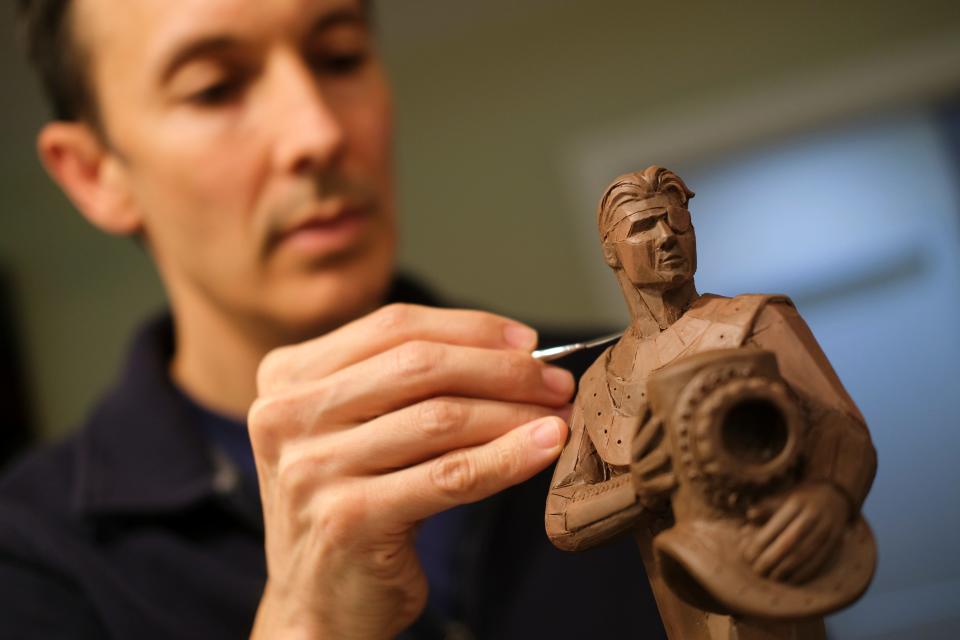
In 1933, Post repeated his round-the-world feat alone with the help of a Sperry autopilot, a radio-based directional finder, added fuel tanks and a variable pitch propeller to improve the aircraft's fuel economy and speed.
That trip was backed by financial and in-kind contributions made by friends, aircraft technology companies and notable Oklahomans, including Frank Phillips, co-founder of Phillips Petroleum Co.
He soared from New York's Floyd Bennett Field at 5:10 a.m. on July 15, 1933. When he landed in Berlin 24 hours later, he had completed the first non-stop flight between the two cities, ever.
Other stops on his global odyssey included four in Siberia, two in Alaska, one in Canada and then New York, completing the journey in just seven days, 18 hours and 49½ minutes, another around-the-world record for a solo pilot that stood for a remarkable 14 years before being broken by someone flying a much-newer aircraft.
More parades and a visit with President Franklin D. Roosevelt followed.
By then, Post owned the Winnie Mae and hoped to enter it into an air race between England and Melbourne, Australia, theorizing he could use strong tail winds at altitudes of greater than 30,000 feet to win.
But he faced both aircraft mechanical challenges and more importantly, physiological challenges for himself that needed resolved.
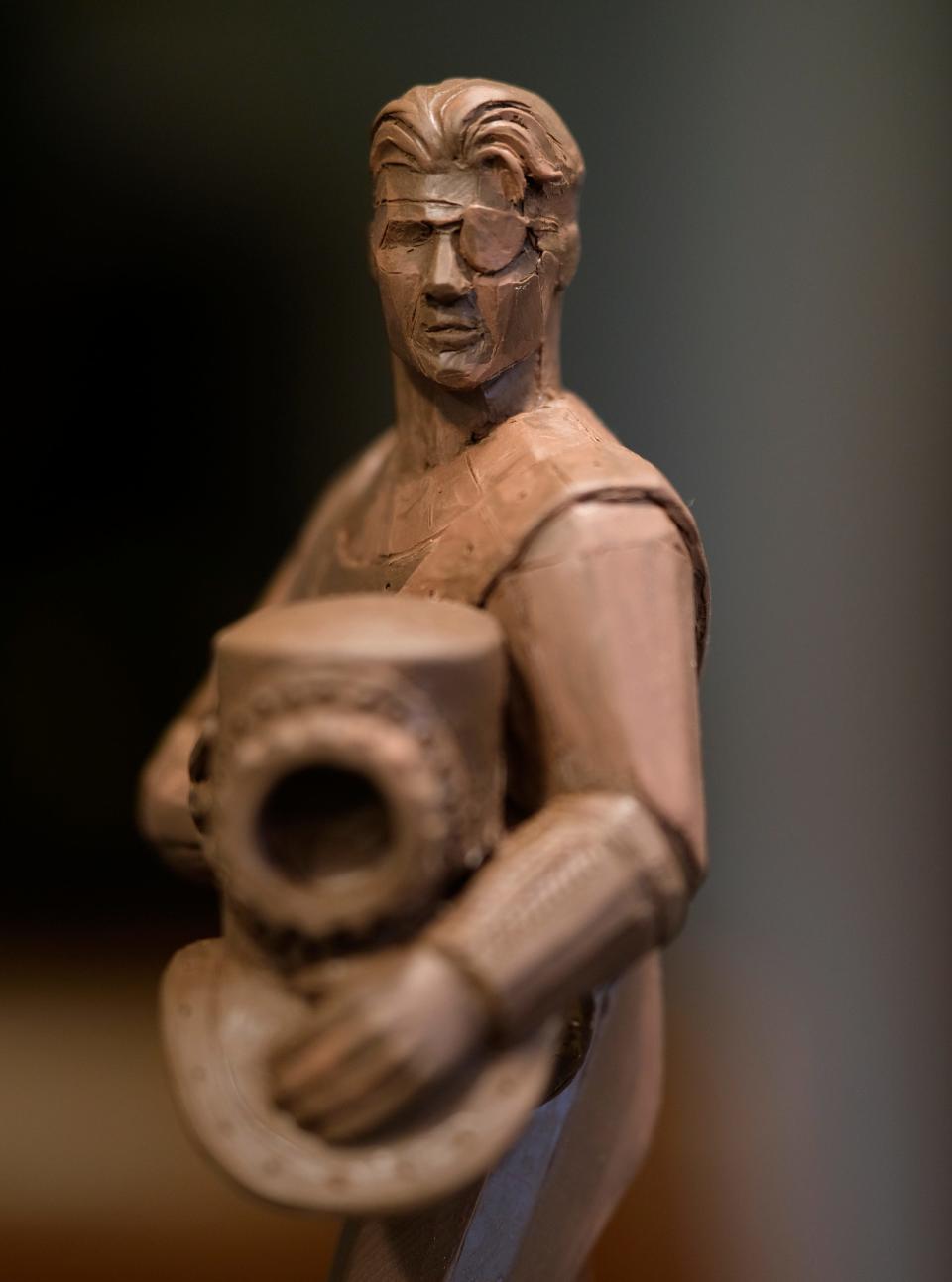
Post soared to new heights
Post theorized creating a pressure suit with an internal supply of oxygen he could wear would make safe flight possible at high altitudes. Consultations with Jimmy Doolittle, who in 1934 was the aviation director at Shell Oil Co., led him to B.F. Goodrich.
The tire company and Post tried several versions of the suit before developing one that worked, which Post tested at an altitude of 40,000 feet over Chicago and at even greater heights over Oklahoma.
While Post missed the race to Australia, he remained convinced he could don the pressure suit and set a coast-to-coast speed record for North America if he and the Winnie Mae were to use tail winds (known today as the jet stream) in the stratosphere.
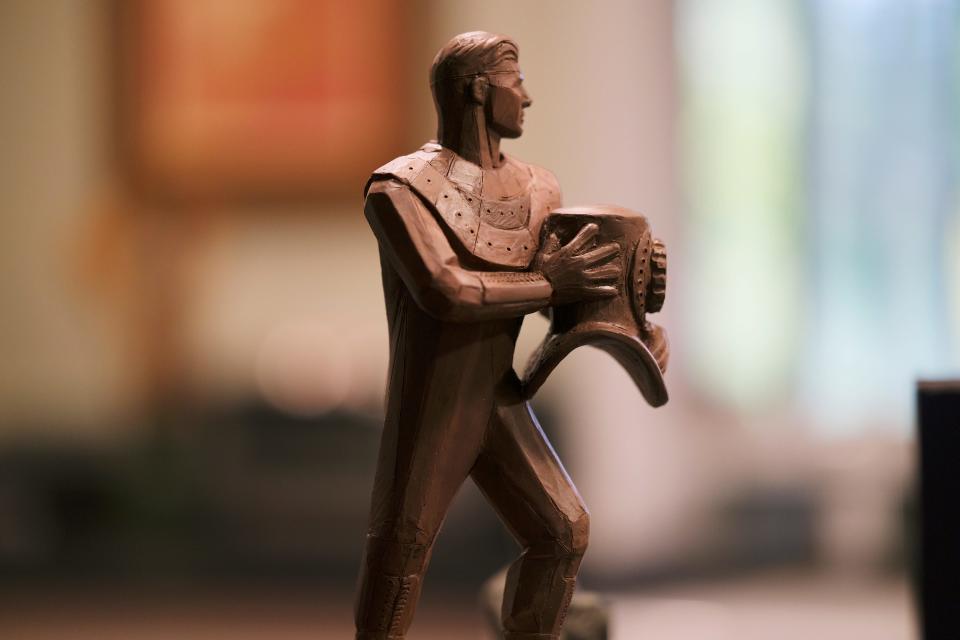
He sold the idea to his old sponsor Frank Phillips, whose company was marketing a higher-octane aviation fuel it had developed. Post also secured financial support from Transcontinental and Western Airlines for his plans.
Post modified the Winnie Mae with wheels that could be jettisoned after takeoff, a special landing skid, and a tool allowing Post to set the aircraft's propeller to a horizontal position before attempting a dead-stick landing to prevent the aircraft from flipping.
Post repeatedly tried the feat but was foiled once by sabotage, a second time by an exhausted supply of oxygen for his suit, a third time by the failure of the plane's external supercharger and then finally by a thrown piston in the Winnie Mae's engine.
Still, Post entered the record books as the first pilot to ride the "jet stream" on Dec. 7, 1934. Congress appropriated $50,000 to purchase and display the Winnie Mae at the Smithsonian Institution the following year. The white aircraft with purple trim remains there today, while its replica hangs in the Oklahoma History Center's rotunda in Oklahoma City.
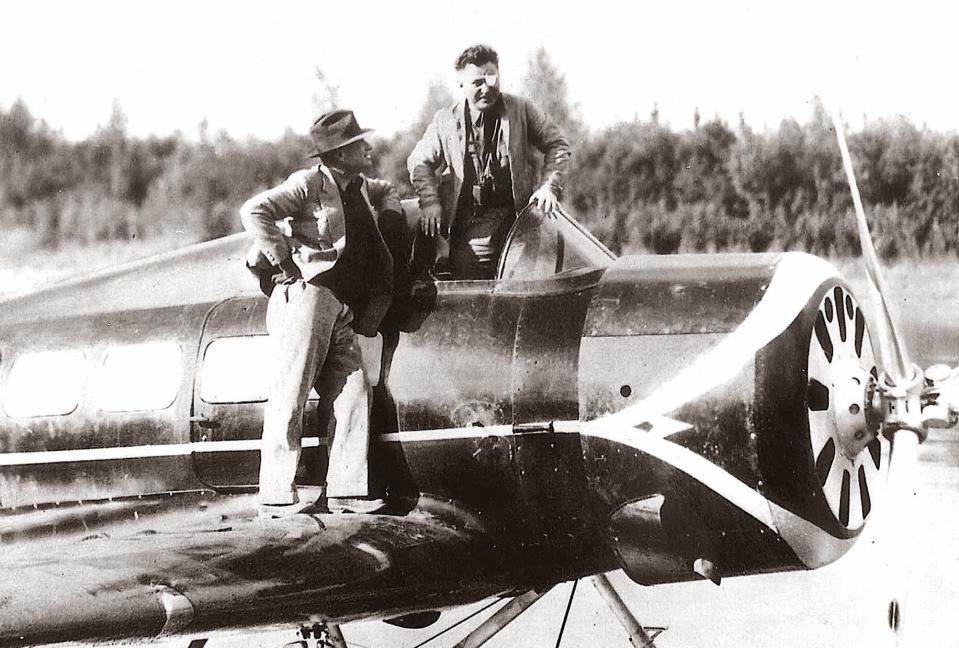
Tragedy claims Post, Will Rogers
Post and humorist/columnist Will Rogers met and became good friends in 1931 after Post's first around-the-world trip.
In 1935, Post wanted to visit Alaska, and Rogers, who hoped to visit with Port Barrow's elderly trader and whaler Charlie Brower for his column, decided to go with him.
The motor of the float-equipped Lockheed aircraft in which they were flying apparently failed as they took off from a lagoon near Point Barrow, though, with tragic results.
"Will Rogers, beloved humorist, and Wiley Post, master aviator, were crushed to death last night when a shiny new airplane motor faltered and became an engine of tragedy near the outpost of civilization," an Associated Press article in The New York Times reported on Aug. 17, 1935.
Post was buried in Oklahoma City, which named a park and an airport in his honor. A replica of the pressure suit he developed with B.F. Goodrich is displayed inside of a case in the history center's rotunda.
Rogers, initially laid to rest in California, was re-interred in Claremore in 1944.
Post's ultimate contributions to aviation and meteorology are unparalleled, said Jeff Briley, the Oklahoma History Center's deputy director.
"His idea, that he could go faster if he could get up there (into the jet stream), that's something every one of us takes advantage of all the time, anytime we get into an aircraft to fly to Dallas or Chicago," Briley said. "It's really a big deal."
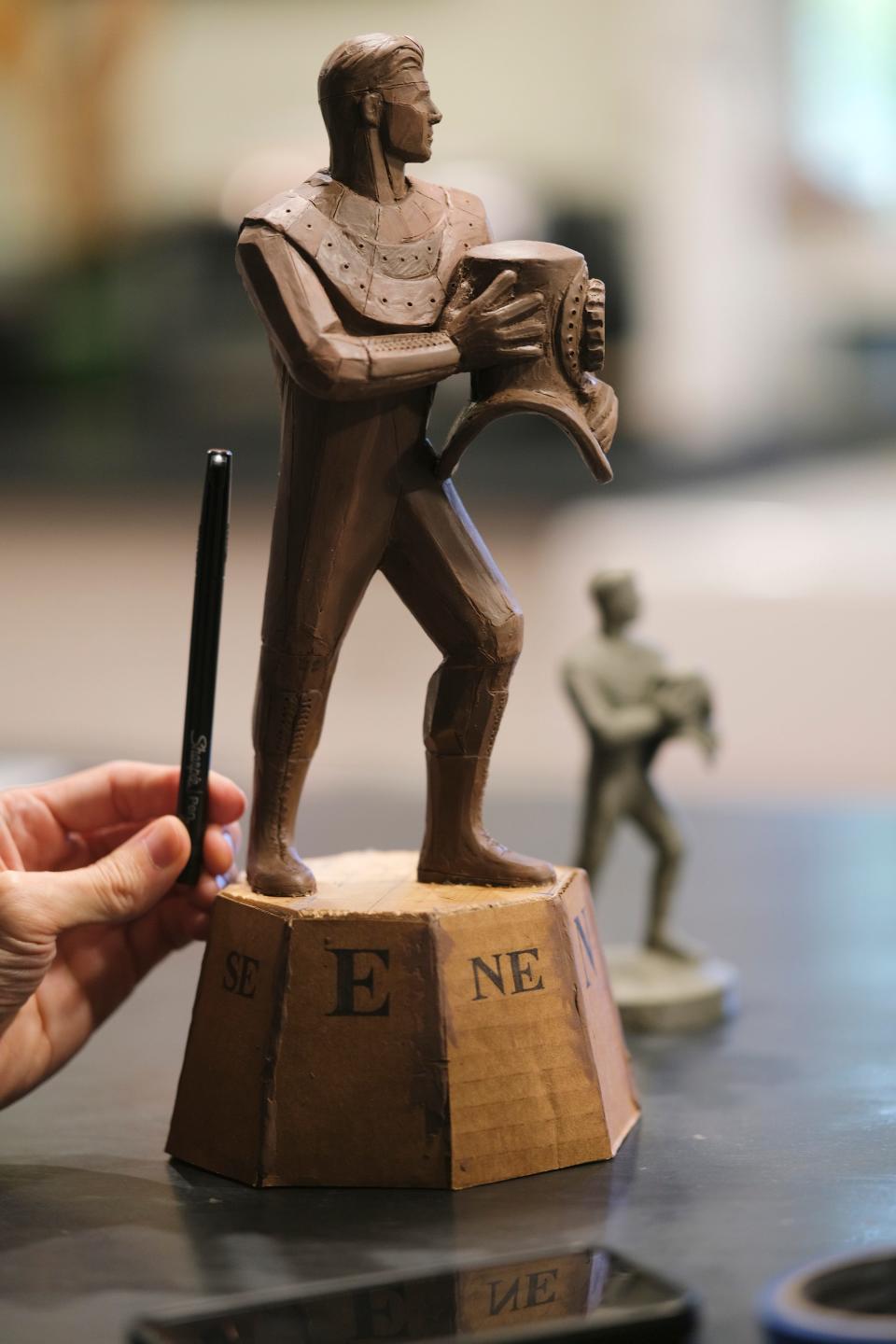
Commission leads to artist's dream
Pratt said Post and his life caught his attention about a decade ago when Creative Oklahoma, a nonprofit seeking to foster the development of a vibrant, creative and innovation-based economy inside the state, selected Pratt's clay-sculpted design of Post dressed in his pressure suit and carrying his helmet to use for a small, bronze it hoped to present to innovators annually.
That idea was scrapped. But Pratt, who grew up in south Oklahoma City as part of a family of artists, then began thinking bigger, wanting to create a heroic, art-deco themed monument to highlight Post's abilities to overcome his challenges and contribute to our world today.
Finding a suitable location took time, until Edmond city officials suggested a piece of city-owned land on the southwest corner of Post Road and State Highway 66.
Edmond's city council approved the concept earlier this year, making it possible for Pratt to begin working on the project's engineering plans and to seek financial backing for a piece of art that likely will cost close to $1 million to build. So far, Edmond's Visual Arts Commission has agreed to contribute $30,000 for his project.
The sculpture will consist of metal tubing enclosed by sculpted metal panels forming its exterior. His goal is to have the piece built and dedicated by 2026, when the highway's centennial is celebrated.
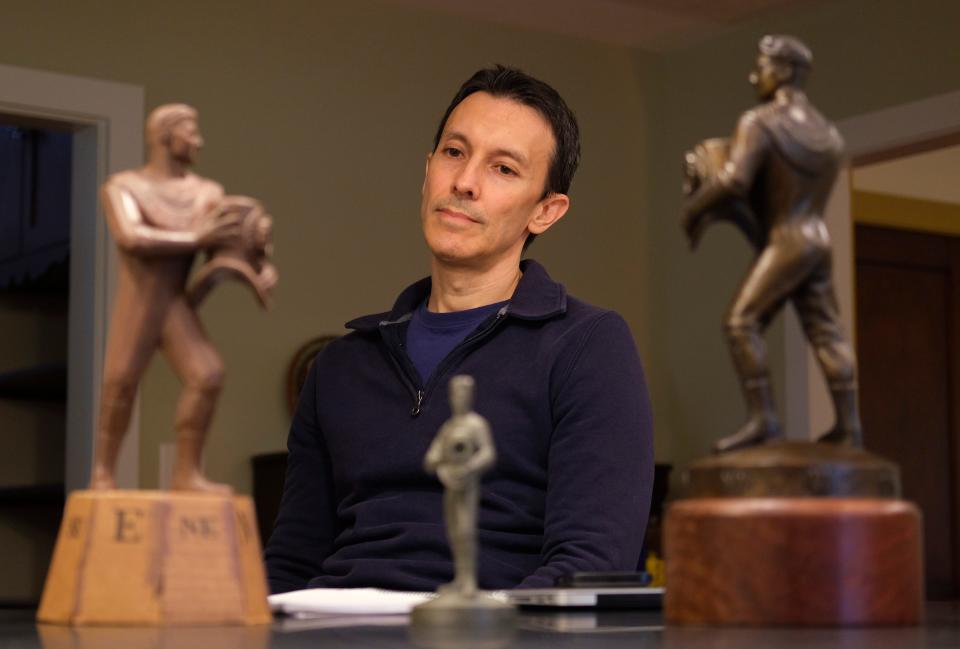
The compass at the monument's base and Post's orientation to true north are intended to represent purpose, direction, hope, having a plan, charting a course and sticking to it, the artist said.
"I see Wiley Post and his life at the intersection of many things that form the identity of Oklahoma — you have the pioneering, innovative spirit and just the hard work ethic that helped him get past his poor education, incarceration and the loss of an eye to figure out his path in life," said Pratt.
"Post helped launch both the state's oil and aviation industries. He was a poster child of Oklahoma, and of our country, in many ways," Pratt said.
This article originally appeared on Oklahoman: Oklahoman sculptor seeks financial lift to fund huge Wiley Post statue

